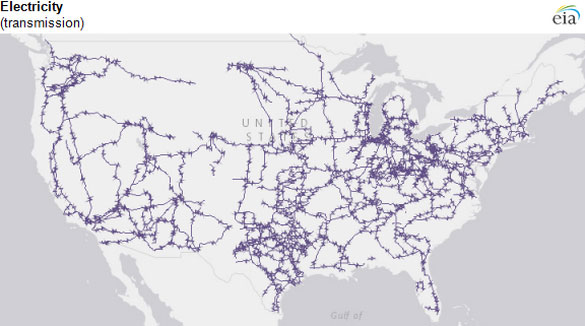Imagine a world where our electricity highways are as efficient and expansive as our interstate highways. In 1956, President Eisenhower revolutionized travel with the Federal-Aid Highway Act, which aimed to eliminate unsafe roads and traffic jams, creating an interstate expressway system that was declared “essential to the national interest.” Fast forward to today, and while our roads span the country, our electricity highways—our transmission systems—remain fragmented in some regions. With the rise of the internet and digital dependency, electricity is now more essential to our daily lives than transportation. Therefore, it's high time we gave our interstate transmission system the same priority as our interstate highway system. Enter Federal Energy Regulatory Commission (FERC) Order No. 1920, a new regulation aiming to modernize our electricity grid. But does it hit the mark? Let's dive in.

The Need for a Robust Interstate Transmission System
Think of interstate transmission like our interstate highways. They’re essential for moving goods across states efficiently and safely. Similarly, a robust transmission system is crucial for delivering reliable and affordable electricity. Yet, many states allow monopoly utilities to build inefficient transmission routes, causing electricity traffic jams and hindering competition in the marketplace for electric energy. This is where FERC steps in with Order No. 1920, aiming to clear these jams and improve our electric highways so that independent power producers, such as SREA’s members, can efficiently deliver low-cost renewable energy to customers across the country.

FERC Order No. 1920: A Step Forward
On May 13, 2024, FERC issued Order No. 1920, a rule designed to overhaul how we plan and build transmission facilities. SREA is largely supportive but sees room for improvement. We joined a coalition of non-profit organizations in filing a Request for Rehearing and Clarification, arguing that some aspects of the order could be better aligned with the public interest.
Key Areas for Improvement
- Benefit-Cost Ratios
FERC allows a benefit-cost ratio of 1.25:1 as a criterion for selecting Long Range Transmission Facilities (LRTFs). SREA argues this should be lowered to 1:1. Why? Because any project with a benefit-cost ratio of at least 1:1 is beneficial to the public. FERC’s current threshold could allow the exclusion of projects that offer significant net benefits, which doesn’t align with promoting the public interest. As outlined in SREA’s Comments, requiring a benefit-cost ratio threshold that is greater than 1:1 for LRTFs allows transmission owners and vertically integrated monopoly utilities to systemically “stymie competition in favor of expensive rate-based generation.” - Underestimating Benefits
The current rule may enable transmission providers to underestimate project benefits. By adopting only seven of the twelve proposed benefits, FERC’s rule allows transmission providers to exclude important factors that could make a transmission project more viable. Considering the full life span of a transmission facility, which is approximately 40 years, benefits often extend beyond the initial 20-year timeline provided in Order No. 1920, further supporting the case for a 1:1 benefit-cost ratio.
Closing the Loopholes
FERC Order No. 1920 still carries forward some loopholes from its predecessor, Order No. 1000. One major issue is that transmission providers aren’t required to adopt a specific benefit-cost ratio or select LRTFs with the highest ratios. This can lead to the rejection of beneficial projects, undermining the goal of an efficient interstate transmission system.
The Way Forward
FERC's new rule presents a golden opportunity for states to collaborate on building a robust interstate transmission system. Even if FERC doesn't lower the benefit-cost ratio threshold to 1:1, state public service commissions can push for such changes within their regions. Early and active engagement in cost allocation discussions will be crucial. By working together, states can ensure the delivery of affordable and reliable electricity, benefiting everyone.
Conclusion
FERC Order No. 1920 is a significant step towards modernizing our electric highways. However, there’s room for improvement to ensure it fully serves the public interest. By addressing the benefit-cost ratio and closing existing loopholes, we can pave the way for a more efficient and reliable interstate transmission system. Just like our interstate highways revolutionized travel, a robust transmission network can transform our energy future.




